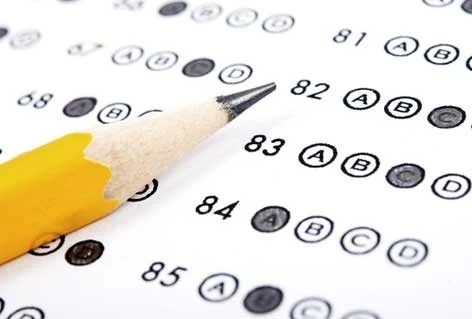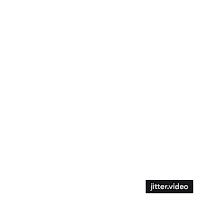MODEL Question for NMCLE license examination NEpal 2081 Part 1
1. Which of the following is the primary causative organism responsible for infective endocarditis in intravenous drug users?
A) Streptococcus pneumoniae
B) Staphylococcus aureus
C) Escherichia coli
D) Pseudomonas aeruginosa
2. Which of the following is the first-line treatment for uncomplicated malaria caused by Plasmodium falciparum?
A) Chloroquine
B) Quinine
C) Artemisinin-based combination therapy
D) Doxycycline
3. Which of the following is a characteristic feature of chronic obstructive pulmonary disease (COPD)?
A) Increased forced expiratory volume in 1 second (FEV1)
B) Decreased residual volume
C) Reversibility with bronchodilator therapy
D) Pink puffer phenotype
4. Which of the following conditions is characterized by a positive Babinski reflex?
A) Guillain-Barré syndrome
B) Amyotrophic lateral sclerosis (ALS)
C) Multiple sclerosis
D) Spinal cord injury
5. Which of the following is the most common type of skin cancer?
A) Basal cell carcinoma
B) Squamous cell carcinoma
C) Melanoma
D) Kaposi sarcoma
6. Which of the following is a common side effect of angiotensin receptor blockers (ARBs)?
A) Dry cough
B) Hyperkalemia
C) Bradycardia
D) Peripheral edema
7. Which of the following is the most appropriate initial management for a patient with acute pancreatitis?
A) Total parenteral nutrition
B) N-acetylcysteine
C) Bowel rest and intravenous fluids
D) Oral metoclopramide
8. Which of the following is the primary mechanism of action of selective serotonin reuptake inhibitors (SSRIs) in the treatment of depression?
A) Inhibition of monoamine oxidase
B) Blockade of alpha-adrenergic receptors
C) Enhancement of serotonin neurotransmission
D) Inhibition of dopamine reuptake
9. Which of the following is a common side effect of long-term corticosteroid therapy?
A) Hypotension
B) Hypokalemia
C) Osteoporosis
D) Hyperglycemia
10. Which of the following is the most common cause of acute bacterial meningitis in neonates?
A) Group B Streptococcus
B) Escherichia coli
C) Listeria monocytogenes
D) Haemophilus influenzae
11. Which of the following is a key feature of sarcoidosis?
A) Periosteal reaction on X-ray
B) Noncaseating granulomas on biopsy
C) Positive antinuclear antibodies (ANA)
D) Bilateral hilar lymphadenopathy on chest X-ray
12. Which of the following medications is commonly used for the prophylaxis of migraine headaches?
A) Gabapentin
B) Amitriptyline
C) Sumatriptan
D) Propranolol
13. Which of the following is the most common etiology of acute hepatitis worldwide?
A) Hepatitis A virus
B) Hepatitis B virus
C) Hepatitis C virus
D) Hepatitis E virus
14. Which of the following is a characteristic feature of Turner syndrome?
A) Short stature and webbed neck
B) Tall stature and ovarian dysgenesis
C) Polydactyly and intellectual disability
D) Microcephaly and hypertelorism
15. Which of the following is the primary treatment for uncomplicated urinary tract infections in pregnant women?
A) Ciprofloxacin
B) Nitrofurantoin
C) Gentamicin
D) Trimethoprim-sulfamethoxazole
16. Which of the following is the most common cause of primary hyperaldosteronism?
A) Adrenal adenoma
B) Pituitary adenoma
C) Renal artery stenosis
D) Hypothalamic dysfunction
17. Which of the following is a characteristic feature of acute intermittent porphyria?
A) Photosensitivity and bullous skin lesions
B) Erythema migrans rash and arthritis
C) Abdominal pain and neuropsychiatric symptoms
D) Renal colic and hematuria
18. Which of the following is the primary pharmacological treatment for trigeminal neuralgia?
A) Carbamazepine
B) Gabapentin
C) Amitriptyline
D) Baclofen
19. Which of the following conditions is characterized by the presence of anti-cyclic citrullinated peptide (anti-CCP) antibodies?
A) Rheumatoid arthritis
B) Systemic lupus erythematosus
C) Sjögren's syndrome
D) Ankylosing spondylitis
20. Which of the following is the primary mechanism of action of loop diuretics?
A) Inhibition of carbonic anhydrase
B) Inhibition of sodium-potassium-chloride cotransporter
C) Inhibition of sodium-glucose cotransporter
D) Inhibition of sodium reabsorption in the ascending loop of Henle
Answer Key:
1. B) Staphylococcus aureus
2. C) Artemisinin-based combination therapy
3. D) Pink puffer phenotype
4. A) Guillain-Barré syndrome
5. A) Basal cell carcinoma
6. B) Hyperkalemia
7. C) Bowel rest and intravenous fluids
8. C) Enhancement of serotonin neurotransmission
9. C) Osteoporosis
10. A) Group B Streptococcus
11. B) Noncaseating granulomas on biopsy
12. D) Propranolol
13. A) Hepatitis A virus
14. A) Short stature and webbed neck
15. B) Nitrofurantoin
16. A) Adrenal adenoma
17. C) Abdominal pain and neuropsychiatric symptoms
18. A) Carbamazepine
19. A) Rheumatoid arthritis
20. D) Inhibition of sodium reabsorption in the ascending loop of Henle










What is your say on this?